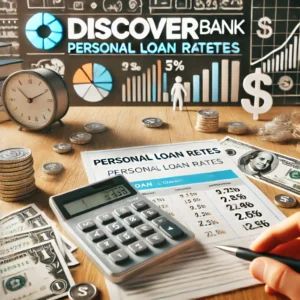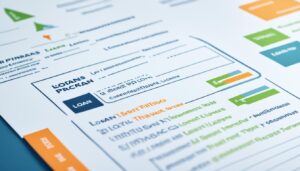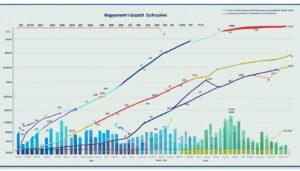In a world where debt has become increasingly common, many individuals find themselves trapped in a vicious cycle of financial stress. Whether it’s due to credit card bills, medical expenses, or other unexpected costs, finding a way out of debt can feel like an overwhelming task. Thankfully, there are options available to help alleviate the burden and regain control of your finances.
One such option is utilizing a personal loan to consolidate your debts. In this article, we will explore how to effectively use a personal loan to consolidate debts, providing you with a roadmap to financial freedom. So if you’re ready to take charge of your financial situation and break free from the chains of debt, keep reading to discover the power and potential of a personal loan.
Tips for choosing the best personal loan option
Choosing the best personal loan option can be a challenging task. With so many financial institutions offering different interest rates and payment terms, it is important to do careful research before making your choice. To help you with this process, we have put together some tips for choosing the best personal loan option.
First, determine the amount and payment term you need. This will give you a sense of the type of loan that best suits your needs. Then, compare the interest rates offered by different financial institutions. It is important to take into account both the nominal interest rate and the effective interest rate, which includes any additional charges.
Additionally, consider the reputation of the financial institution. Look for reviews and opinions from other customers to find out if the company is trustworthy and transparent in its operations. It is also important to analyze payment conditions, such as the flexibility to advance installments or the possibility of renegotiating the contract if any unforeseen financial circumstances occur.
Finally, if you’re thinking about using a personal loan to consolidate debt, make sure it’s truly the best option for you. Assess whether the total loan amount will be less than the sum of your current debts and check whether the interest rates are advantageous. Keep in mind that debt consolidation will only be effective if you have the financial discipline to not take on new debt in the future.
How to Use a Personal Loan to Get Out of Debt
Getting out of debt can be a challenging process, but using a personal loan to consolidate your debts can be an effective strategy. Personal loans often come with lower interest rates than credit cards, making them a valuable tool for managing and paying off debt. Here’s a step-by-step guide on how to use a personal loan to get out of debt.
1. Assess Your Debt Situation
Steps:
- List All Debts: Start by listing all your current debts, including credit card balances, medical bills, personal loans, and any other outstanding obligations.
- Calculate Total Debt: Add up the total amount you owe.
- Review Interest Rates: Note the interest rate for each debt. This will help you understand which debts are costing you the most.
Why It’s Important:
Knowing the full scope of your debt will help you determine how much you need to borrow and whether a personal loan is a viable option for you.
2. Evaluate Your Credit Score
Steps:
- Check Your Credit Report: Obtain a copy of your credit report from the three major credit bureaus (Equifax, Experian, and TransUnion).
- Review Your Score: Know your credit score, as it will affect your eligibility for a personal loan and the interest rate you’ll receive.
Why It’s Important:
A good credit score can qualify you for better loan terms and lower interest rates, making it easier and cheaper to consolidate your debt.
3. Research Personal Loan Options
Steps:
- Compare Lenders: Look at various lenders, including banks, credit unions, and online lenders, to find the best personal loan options.
- Check Rates and Terms: Compare interest rates, loan amounts, repayment terms, and fees.
- Use Prequalification Tools: Many lenders offer prequalification tools that allow you to check potential rates and terms without impacting your credit score.
Why It’s Important:
Finding the right loan with favorable terms will ensure that the loan helps reduce your overall debt burden rather than adding to it.
4. Calculate Potential Savings
Steps:
- Estimate Monthly Payments: Use a personal loan calculator to estimate your monthly payments based on different loan amounts and interest rates.
- Compare Total Costs: Calculate the total cost of the loan over its term and compare it to the total cost of your current debts if you continue paying them off as is.
Why It’s Important:
Understanding your potential savings will help you decide if a personal loan is the best solution for your debt situation.
5. Apply for the Loan
Steps:
- Gather Documentation: Prepare the necessary documentation, such as proof of income, employment history, and identification.
- Submit Application: Complete and submit your loan application with the chosen lender.
- Await Approval: Wait for the lender to review your application and provide a decision. This can take a few days to a week.
Why It’s Important:
Having your documents ready and applying correctly increases your chances of approval and speeds up the process.
6. Consolidate Your Debts
Steps:
- Receive Funds: Once approved, the loan amount will be disbursed to your bank account.
- Pay Off Debts: Use the loan funds to pay off your existing debts in full.
- Close Paid Accounts: Consider closing paid-off accounts to avoid accumulating new debt, but be mindful of how this might impact your credit score.
Why It’s Important:
Using the loan to immediately pay off high-interest debts reduces the overall interest you’ll pay and simplifies your payments into one monthly installment.
7. Create a Repayment Plan
Steps:
- Set Up Automatic Payments: To avoid missing payments, set up automatic payments for your new loan.
- Budget for Payments: Adjust your monthly budget to ensure you can comfortably make the loan payments.
- Monitor Your Progress: Regularly review your loan statements and keep track of your repayment progress.
Why It’s Important:
A solid repayment plan ensures that you stay on track and pay off the loan as agreed, ultimately getting you out of debt.
8. Avoid Accumulating New Debt
Steps:
- Stick to a Budget: Maintain a budget that prevents overspending.
- Use Credit Wisely: Only use credit for essential purchases and pay off balances in full each month.
- Build an Emergency Fund: Save money for unexpected expenses to avoid relying on credit in the future.
Why It’s Important:
Preventing new debt accumulation ensures that you don’t fall back into debt after working hard to pay it off.
Conclusion
Using a personal loan to consolidate debt can be a smart strategy if done correctly. By assessing your debt, improving your credit score, researching loan options, and creating a solid repayment plan, you can reduce your debt burden and simplify your finances. Always remember to avoid accumulating new debt and focus on building a strong financial foundation for the future.













